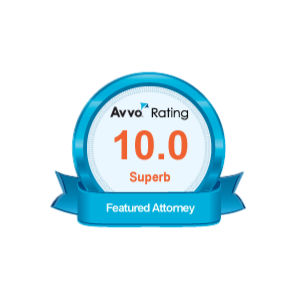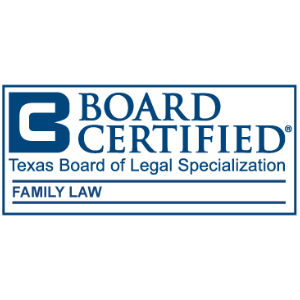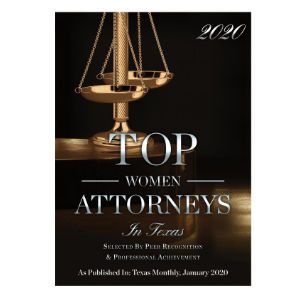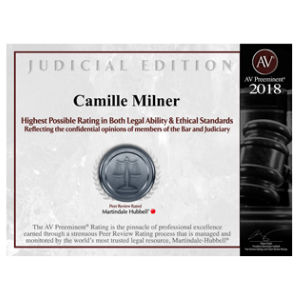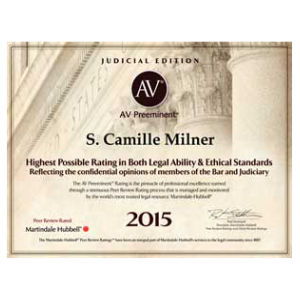
Most of us are familiar with the Arthur Miller play and recent movie, “The Crucible.” The definition of crucible from the Meriam-Webster dictionary, is as follows:
Definition of crucible
- a vessel of a very refractory material (such as porcelain) used for melting and calcining a substance that requires a high degree of heat
- a severe test; “He’s ready to face the crucible of the Olympics.”
- a place or situation in which concentrated forces interact to cause or influence change or development
There is a series of books, not the Arthur Miller play, but a series of books written by Psychologist, David Scharch, Ph.D., in which he talks about the “Crucible.” His goal in these books, as I understand them, is to help people restore their marriage and/or sexual intimacy. But I have seen that his basic premise very useful in a description of what happens in some divorces, particularly in the Collaborative Divorce process. In Dr. Schnarch’s books and in his therapy program, again, as I understand them, he helps clients/patients get to the point where they feel emotionally (and of course physically) safe enough to say their real truth. If the other person all feels that they are in a safe emotional place, they are able to hear what the other person says and receive it openly, without anger, shutting down or defensiveness. From that point, the two are able to connect on a vulnerable level that helps them move forward toward the goal they are reaching.
In my experience, some of the basic tenets explained by Dr. Schnarch can have a critical and life-changing role.
The Crucible in divorce is when one party is willing to expose their metaphorical underbelly, their vulnerability, by telling the raw truth to the other side, knowing that the response may be dangerous. Telling the truth may cause the other side to become enraged, cry, become defensive or even shut down. The Crucible is that moment of truth when the side stating their truth delivers it to the listener and then the listener also exposes their metaphorical underbelly and makes themselves emotionally available to take in that truth, no matter what it is going to do them emotionally – they, for that moment, are willing to hear their partner’s truth, with all it’s thorny edges that may metaphorically cut their heart open.
If this Crucible moment is handled within a safe emotional space, such as in a Joint Meeting in a Collaborative Divorce case, the clients can make a connection and move forward in a way that is simply not possible in the litigation process.
Here is an example: in one Collaborative Divorce case in which I was one of the attorneys, we had two clients who still loved each other very much, but there was an impediment, one that was very difficult to uncover so that they could move forward. One of the clients had suffered from depression for years and was, at times, suicidal, but the other client never really understood why. In the Collaborative Joint Meeting, with both clients’ attorneys present with them and a Divorce Coach who was a licensed mental health professional, the client who had suffered from those years of depression was able to tell their spouse that, while they still loved them very much and loved their family, he/she was gay and could no longer deny it to themselves, their spouse, their children or the world. Both clients fell apart in that meeting, and yet, because we were in an emotionally safe environment, we were able to manage walking through that fire of their Crucible together. To say that the clients fell apart would be an understatement.
Each attorney took their client into a separate room so that they could recover from the event that just took place and the Divorce Coach/Mental Health Professional went between rooms giving the clients support as their began to recover from their painful moment of truth. In those rooms, each client was emotionally and at least one, physically, curled up in a chair in the fetal position. The one who heard the news for the first time was devastated for obvious reasons, but the one who gave his/her truth was also hurting – they truly loved their spouse and family and while their wanted their original marriage and family unit to work, they have suffered from the years of debilitating depression because they could not emotionally survive in that original model. That reporting spouse was suffering, too, because they so hated hurting their spouse and knowing how this would hurt the family. But with some time and comforting, what we learned is that, while the truth was devastating to each party, once they went through this fire, the truth, however painful, was better than the ambiguity of not knowing and not facing their truth.
With the help of a Child Specialist to give support and voice to the children, with each client having their own counselor, and then with our Divorce Coach in the Collaborative Divorce process, we were able to help that family get to the other side, rebuild, in truth. I will not tell you that every meeting going forward was without tears and sometimes anger, or that they slid into their individual lives and new life as a family, but we got there, and at the end, we saw a new family emerge, one built on truth.
Eventually, each party found happiness with a new partner, and as the 2010 movie title said, “The Kids Are Alright.”
One of the clients even jokingly reported back to us lawyers, on behalf of both clients, that they have figured out the way to recoup their professional fees: they plan to go to Hollywood and develop a television series called, “The Real Life Brady Bunch.” They report that they spend ,many holidays together and sometimes even go to movies together as a group, just like the 1960’s, “His, Mine and Ours.” As Collaborative Professionals, we were able to witness and be a part of a real, not just fictionalized, version of this story. Because this family was willing to work hard to get to a place that they could say their truth and HEAR it, their CRUCIBLE, they were able to rebuild, modeling for their children how to work through some of life’s most difficult situations, still as a family, just a different kind of family.
This is just one example of many that we have seen in the Collaborative Divorce process.
For anyone who has ever witnessed the permanent damage and destruction that litigation/Court can do to a family, this no less difficult but much more constructive way to handle a divorce offers, is a welcome option.
If you or someone you know is needing advice on divorce or other family or probate issues, please contact me at www.milner-law.com; or 940-383-2674.



